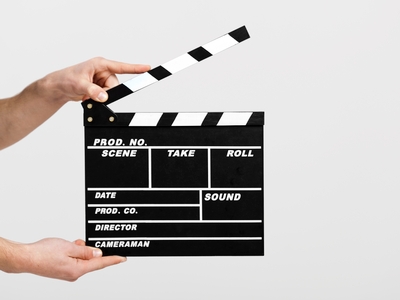I was at a film event the other night, and someone asked, “So what do you do for a living?” I, of course, answered, “I’m an editor.” They asked, “What movies have you worked on?”
It happens all the time. But the other night, for the first time, someone asked me if I saw any similarities between print and film editing. I said, “Not many,” but when I got home I started to think about that answer. I realized there are parallels between what I do and what film editors do.
 Both print and film editing can be described as part of the “post-production process” of their respective fields: moving images on film (or primarily digital disc now) and words on paper. In both cases, someone has already done the “raw” work in their respective mediums. Going forward, a film editor assembles shots into a coherent sequence, working with the layers of images, story (including character arc), dialogue and pacing he or she has gleaned (and discussed) with the writer and director.
Both print and film editing can be described as part of the “post-production process” of their respective fields: moving images on film (or primarily digital disc now) and words on paper. In both cases, someone has already done the “raw” work in their respective mediums. Going forward, a film editor assembles shots into a coherent sequence, working with the layers of images, story (including character arc), dialogue and pacing he or she has gleaned (and discussed) with the writer and director.
That’s not much different from what we fiction editors do. We have a raw piece of work with engaging characters who go through all sorts of challenges, twists and turns, to evolve (arc) into men and women changed, in profound ways, from who they were at the beginning. We ensure that each chapter has a setup, a complication and a resolution and that it segues seamlessly to the next chapter. We make sure the pacing fits the genre — fast and furious for an action novel, leisurely for a literary character piece, somewhere in-between for a murder-mystery or psychological thriller.
Film editing is often referred to as the “invisible art” of cinema because when it’s done well, the viewer isn’t aware of it. I would argue the same could be said of good print editing. We notice the editing only when it’s not done well or we suspect it hasn’t been done at all.
But there is a departure. In the film world, editors are in big demand. Even producers of low-budget short films (like me) try to get the best editor they can within their film community. Some newbie directors (like me) take film-editing courses so they can at least do a rough cut on their own, but many (again, like me) realize it’s a skill best left to the pros.
Here’s something that goes along with being considered an “artist” by your peers: you are revered and rewarded through accolades, mentions in film reviews and awards. Did you know that ever since 1981, every film selected as best picture has also been nominated for the film editing Oscar, and two-thirds of the best picture winners have also won for film editing? (And the statistics are similar for the film awards from other countries, including the Canadian Screen Awards.)
That doesn’t happen much in the print world. Yes, there are editing awards — the Tom Fairley (from our own EAC), the Perkins and the Hugos. Once in a blue moon the winner of the Giller or the GG will mention their editor at the awards ceremony, or afterwards during a newspaper interview, or on their own blog. But I wonder if nominating not only the writers of fiction and non-fiction but also a few of their editors would cause editors in general to be seen more as indispensable players in the process of print, just as our film counterparts are in cinema. I wonder if making print editors a little more “visible” as “invisible artists” might not be a good thing.

